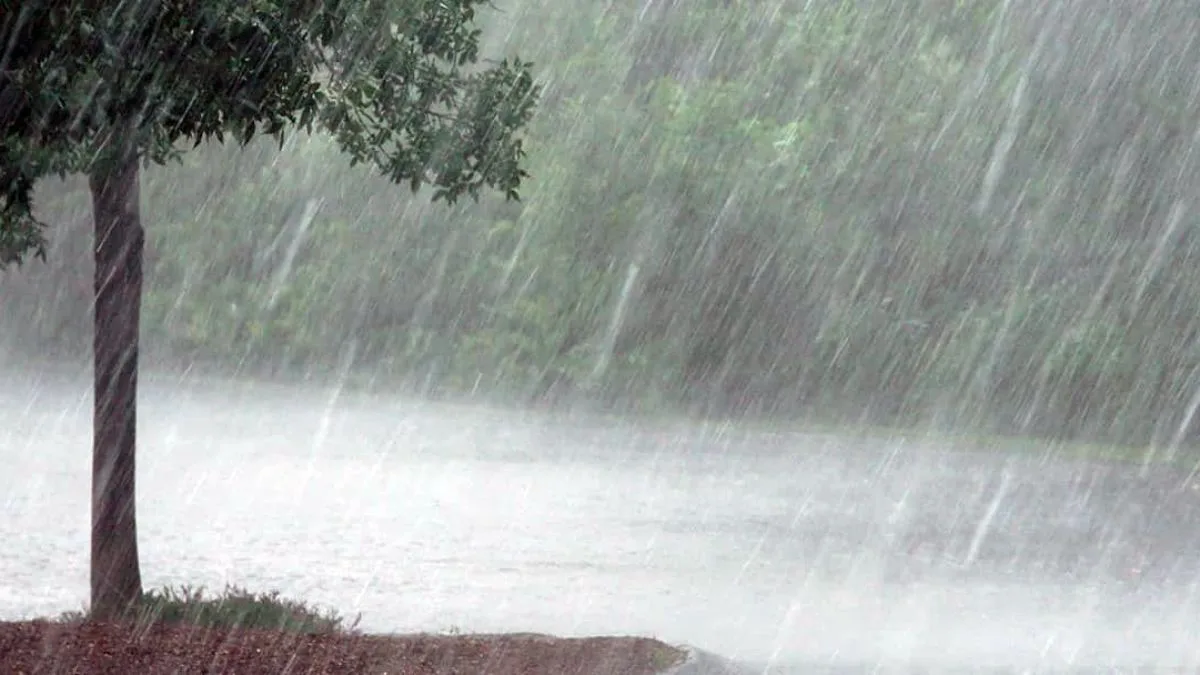The southwest monsoon has officially arrived in South Bengal, bringing much-needed respite from the scorching summer heat. The Alipore Meteorological Department (RMD) has declared the onset, forecasting heavy to very heavy rainfall across West Bengal throughout the week. Kolkata and its neighboring districts are already experiencing overcast skies and intermittent showers. This article provides a detailed overview of the current weather conditions, forecasts, and potential impact on the region.
The arrival of the monsoon is crucial for agriculture, water resources, and overall climate regulation in West Bengal. The India Meteorological Department (IMD) is closely monitoring the evolving weather system and has issued warnings for heavy rainfall and thunderstorms in several districts. Residents and authorities are advised to stay alert and take necessary precautions to mitigate potential disruptions caused by the inclement weather.
This report delves into the specifics of the monsoon’s arrival, the weather forecasts for various districts, and the advisories issued by the meteorological department. Stay tuned for comprehensive coverage of the monsoon’s impact on South Bengal.
Monsoon Arrives in South Bengal
The Alipore Meteorological Department (RMD) officially announced the arrival of the southwest monsoon in South Bengal on Tuesday. This announcement marks the beginning of widespread rainfall in Kolkata and adjoining districts. Occasional downpours have already led to a noticeable drop in temperature, providing relief from the prolonged summer heat.
Kolkata recorded a minimum temperature of 25.7°C, which is 1.3°C below normal, while Tuesday’s maximum temperature settled at 28.4°C—5.4°C below the seasonal average. Meteorologists have attributed the rapid advancement of the monsoon to favorable conditions. The seasonal rain-bearing winds have already covered parts of Odisha, Jharkhand, and Bihar, indicating a strong monsoon current.
A cyclonic circulation over the northwestern Bay of Bengal has intensified into a well-marked low-pressure area. This low-pressure area is moving northwestward and is expected to bring continued rainfall across southern West Bengal. The IMD is closely monitoring its movement to provide timely updates and warnings.
Heavy Rainfall Warning Issued
On Wednesday, the IMD issued a warning for heavy to very heavy rainfall accompanied by thunderstorms and gusty winds across all districts of South Bengal. Scattered heavy rain (7 to 11 cm) is likely in Kolkata, Howrah, North and South 24 Parganas, East and West Midnapore, Jhargram, Purulia, and Nadia. Gusts of 30–40 km/h are also expected in these areas.
Parts of Hooghly, Bankura, East and West Bardhaman, Murshidabad, and Birbhum may witness heavy to extremely heavy rainfall (7 to over 20 cm), with some locations likely to receive over 20 cm of rain. The IMD has advised residents in these districts to stay indoors and avoid unnecessary travel.
Sea conditions are expected to be rough due to the intensifying weather system. Authorities have issued advisories for fishermen, urging them not to venture into the sea until the weather improves. The IMD is continuously updating its forecasts and providing real-time information to the public.
Rainfall in North Bengal
In North Bengal, the monsoon had already arrived earlier, and light to moderate rain is expected across the region this week. On Wednesday, heavy rainfall (7 to 11 cm) is likely in Jalpaiguri and North Dinajpur. Thunderstorms and scattered rain are forecast in other districts.
Rainfall is expected to intensify on Thursday, with heavy showers predicted in Darjeeling, Kalimpong, Jalpaiguri, Alipurduar, Cooch Behar, and North Dinajpur. The IMD continues to monitor the evolving weather system and urges residents and authorities to stay alert for potential disruptions caused by the inclement conditions.
The consistent rainfall in North Bengal is vital for the region’s agriculture, especially tea cultivation. However, excessive rainfall can lead to landslides and flash floods, posing a threat to local communities. Authorities are taking precautionary measures to minimize potential damage.
Potential Impact and Safety Advisories
The heavy rainfall is expected to cause waterlogging in urban areas, leading to traffic disruptions and potential damage to infrastructure. Low-lying areas are at risk of flooding, and residents are advised to move to safer locations if necessary. The authorities are prepared to provide assistance and support to those affected by the weather.
The IMD has issued the following safety advisories:
- Stay indoors during heavy rainfall and thunderstorms.
- Avoid traveling unless absolutely necessary.
- Keep a safe distance from electric poles and wires.
- Monitor weather updates and advisories from the IMD.
- Prepare an emergency kit with essential supplies.
Residents are urged to follow these guidelines to ensure their safety and minimize the impact of the adverse weather conditions. The authorities are working to ensure that all necessary measures are in place to handle any emergencies that may arise.
Conclusion: Staying Prepared for the Monsoon
The arrival of the monsoon in South Bengal brings both relief and challenges. While the rainfall is essential for agriculture and water resources, it also poses a threat of flooding and disruption. The Alipore Meteorological Department’s forecasts and warnings are crucial for residents and authorities to stay prepared and take necessary precautions.
The IMD’s continuous monitoring of the weather system ensures that timely updates and advisories are available to the public. By staying informed and following safety guidelines, residents can minimize the potential impact of the heavy rainfall and thunderstorms. The authorities are committed to providing support and assistance to those affected by the weather, ensuring the safety and well-being of the community.
As the monsoon progresses, it is essential to remain vigilant and adaptable to the evolving weather conditions. Regular updates from the IMD and local authorities will help in making informed decisions and staying safe throughout the monsoon season.

Leave a Reply